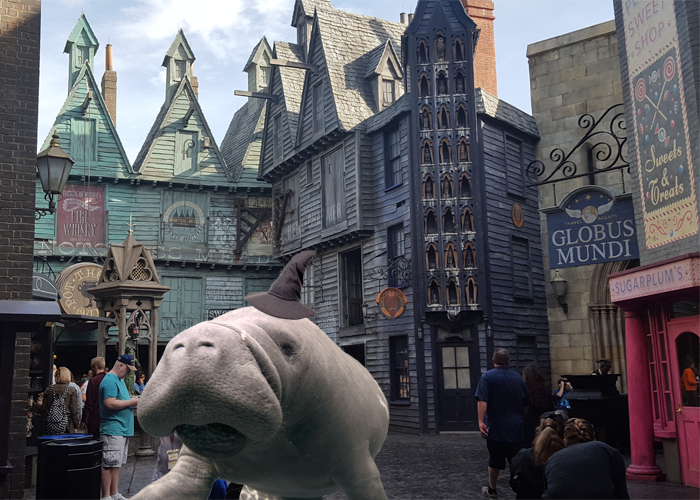Tracking Clicks in Emails
Hi,
I frequently use the same action or donation URL multiple times inside of an email. I'd like to know which links are being clicked on the most inside the delivered email for optimization. For instance, if you have a call out box in a sidebar with a headline, photo and a "take action button", I want to know if we get more clicks from the headline, the photo, or the take action button.
Another use scenario would be to have a ps below the signature. I know ps's work in direct mail, but how do they perform for us in email. I'd like to know!
I suppose one option would be to clone the donation / action page a bunch of times. But since there are unique urls that are generated from Luminate/Convio I'd think there must be a way to track this. But support says there isn't. So turning to the community to see how folks are managing this.
Comments
-
This is possible if you append additional arguments to each link in order to make them unique. For example, https://secure2.convio.net/shortname/site/Donation2?df_id=1234&1234.donation=form1&link=headline vs. https://secure2.convio.net/shortname/site/Donation2?df_id=1234&1234.donation=form1&link=photo vs. https://secure2.convio.net/shortname/site/Donation2?df_id=1234&1234.donation=form1&link=takeaction. With this approach, you'll effectively have three different "pages" in your clickthrough reports, even though ultimately each URL leads to the same donation form.
4 -
Hi, Erik!
I haven't actually done this myself, but I think this approach should work. It is a little messy, so if anyone else has worked out a better way to track things like this, please speak up!
First, when you're building in your links to your donation forms/action alerts, you can add additional arguments that won't actually change how people use those modules, but that will give you markers to track how people are interacting with your content. These are called "source codes" and "sub-source codes".
The link to your main donation form is "https://secure3.convio.net/sdc/site/Donation2?&df_id=1553". See how there's that &df_id bit at the end? That's an additional argument that, in this case, tells the server exactly which donation form to serve up. Source codes and sub-source codes are also arguments. You can add them to the end of that link as you're building out your e-mails.
For example, if I wanted to link to that form from a "Donate Now" button in an e-mail I was putting together, I could have a link that looked like "https://secure3.convio.net/sdc/site/Donation2?&df_id=1553&s_src=DonateNowButton". That would associate any clicks to that URL with the "DonateNowButton" source code.
The same basic idea applies with sub-source codes. Just use "&s_subsrc=Sub-SourceName" as your argument.
For more information, the documentation you'll need is here: http://help.convio.net/site/PageServer?pagename=Admin_Origin_SourceSubSource_Understanding#special. Just know that it's written with the expectation that you'll be using the WYSIWYG, but the same principles apply.
That's how you make the data trackable. Here's how you report on it.
In the email module, under the reports tab, you have the option of running a clickthrough summary report. It will tell you how many times a link has been clicked in an e-mail. By using source codes and sub-source codes, you've made the links different enough for the system to track on the cilckthrough summary report.
Hope this helps!
-Steve
3 -
Steve Cooper:
Hi, Erik!
I haven't actually done this myself, but I think this approach should work. It is a little messy, so if anyone else has worked out a better way to track things like this, please speak up!
First, when you're building in your links to your donation forms/action alerts, you can add additional arguments that won't actually change how people use those modules, but that will give you markers to track how people are interacting with your content. These are called "source codes" and "sub-source codes".
The link to your main donation form is "https://secure3.convio.net/sdc/site/Donation2?&df_id=1553". See how there's that &df_id bit at the end? That's an additional argument that, in this case, tells the server exactly which donation form to serve up. Source codes and sub-source codes are also arguments. You can add them to the end of that link as you're building out your e-mails.
For example, if I wanted to link to that form from a "Donate Now" button in an e-mail I was putting together, I could have a link that looked like "https://secure3.convio.net/sdc/site/Donation2?&df_id=1553&s_src=DonateNowButton". That would associate any clicks to that URL with the "DonateNowButton" source code.
The same basic idea applies with sub-source codes. Just use "&s_subsrc=Sub-SourceName" as your argument.
For more information, the documentation you'll need is here: http://help.convio.net/site/PageServer?pagename=Admin_Origin_SourceSubSource_Understanding#special. Just know that it's written with the expectation that you'll be using the WYSIWYG, but the same principles apply.
That's how you make the data trackable. Here's how you report on it.
In the email module, under the reports tab, you have the option of running a clickthrough summary report. It will tell you how many times a link has been clicked in an e-mail. By using source codes and sub-source codes, you've made the links different enough for the system to track on the cilckthrough summary report.
Hope this helps!
-Steve
Oops. Looks like we cross-posted. Noah's solution is a little more elegant. I say go with that one.
Nice tip, Noah! I didn't know about the "link" argument.
0 -
Steve Cooper:
Oops. Looks like we cross-posted. Noah's solution is a little more elegant. I say go with that one.
Nice tip, Noah! I didn't know about the "link" argument.
I just used "link" as an arbitrary URL argument, but your approach is better in that it uses source and sub-source codes, which means that not only will each link show up as unique in clickthrough details, but the source and sub-source codes will also be included on any transactions made as a result as well.
2 -
Noah Cooper:
I just used "link" as an arbitrary URL argument, but your approach is better in that it uses source and sub-source codes, which means that not only will each link show up as unique in clickthrough details, but the source and sub-source codes will also be included on any transactions made as a result as well.
In these emails I'm already using sub-source codes (case scenario: a 3part email series with each part having multiple segments, so using things like &s_src=burma-activists1, &s_src=burma-fulllist1; &s_src=burma-activists2, &s_src=burma-fulllist2, etc)
So if I can use "link" that will work better.
0 -
We do this via Google Analytics. It has the benefit of being a different URL in email reports, and if you are doing GA goals tracking, you can filter/pivot by which version of the base URL was used.
2 -
Do you happen to know if it's possible to get that information from Luminate Online Web Services?
I'm looking at available types - EmailCampaign, EmailMessage, EmailDelivery and EmailRecipient and while I can retrieve open count and click count, I don't see the clickthrough URL anywhere0 -
Szymon Zaleski:
Do you happen to know if it's possible to get that information from Luminate Online Web Services?
I'm looking at available types - EmailCampaign, EmailMessage, EmailDelivery and EmailRecipient and while I can retrieve open count and click count, I don't see the clickthrough URL anywhereHi Szymon, I think you're looking for the email reports tab. If you go Email, select the email campaign containing the message you want information on, and click on the Reports tab, you can download a Clickthrough Details Report or a Clickthrough Summary Report. The details report will show you what every person that took action in your email clicked on, and the summary report will tell you how many times each link was clicked.
0 -
Hi Alex,
Thank you for your response. Yes, we are currently running these reports (Campaign Open Report and Clickthrough Details Report) on weekly basis with some additional post-processing to make them interactive for our analysts. I am trying to save the time and repetitive tasks by automating them based on the information retrieved from LO using the Web Services and while most of the fields can be replicated, I can't find the actual clickthrough URL addresses in Web Services. They are obviously stored in the Luminate database as they show up on canned Clickthrough Details Report, they just might not be available through the automation.0 -
Szymon Zaleski:
Hi Alex,
Thank you for your response. Yes, we are currently running these reports (Campaign Open Report and Clickthrough Details Report) on weekly basis with some additional post-processing to make them interactive for our analysts. I am trying to save the time and repetitive tasks by automating them based on the information retrieved from LO using the Web Services and while most of the fields can be replicated, I can't find the actual clickthrough URL addresses in Web Services. They are obviously stored in the Luminate database as they show up on canned Clickthrough Details Report, they just might not be available through the automation.Ah, got it! I misunderstood, sorry. It is a little frustrating that most of the non-Report Writer reports can't be automated. If you're using the source and subsource codes, I think you can retrieve those from an interaction report. Unfortunately I believe that's really the only way, and it doesn't give you complete data - it just shows that performed an action on your site, and doesn't show if people click on a link just to look. Hopefully someone else has more information if it is possible.
0
Categories
- All Categories
- Shannon parent
- shannon 2
- shannon 1
- 21 Advocacy DC Users Group
- 14 BBCRM PAG Discussions
- 89 High Education Program Advisory Group (HE PAG)
- 28 Luminate CRM DC Users Group
- 8 DC Luminate CRM Users Group
- Luminate PAG
- 5.9K Blackbaud Altru®
- 58 Blackbaud Award Management™ and Blackbaud Stewardship Management™
- 409 bbcon®
- 2.1K Blackbaud CRM™ and Blackbaud Internet Solutions™
- donorCentrics®
- 1.1K Blackbaud eTapestry®
- 2.8K Blackbaud Financial Edge NXT®
- 1.1K Blackbaud Grantmaking™
- 527 Education Management Solutions for Higher Education
- 1 JustGiving® from Blackbaud®
- 4.6K Education Management Solutions for K-12 Schools
- Blackbaud Luminate Online & Blackbaud TeamRaiser
- 16.4K Blackbaud Raiser's Edge NXT®
- 4.1K SKY Developer
- 547 ResearchPoint™
- 151 Blackbaud Tuition Management™
- 1 YourCause® from Blackbaud®
- 61 everydayhero
- 3 Campaign Ideas
- 58 General Discussion
- 115 Blackbaud ID
- 87 K-12 Blackbaud ID
- 6 Admin Console
- 949 Organizational Best Practices
- 353 The Tap (Just for Fun)
- 235 Blackbaud Community Feedback Forum
- 55 Admissions Event Management EAP
- 18 MobilePay Terminal + BBID Canada EAP
- 36 EAP for New Email Campaigns Experience in Blackbaud Luminate Online®
- 109 EAP for 360 Student Profile in Blackbaud Student Information System
- 41 EAP for Assessment Builder in Blackbaud Learning Management System™
- 9 Technical Preview for SKY API for Blackbaud CRM™ and Blackbaud Altru®
- 55 Community Advisory Group
- 46 Blackbaud Community Ideas
- 26 Blackbaud Community Challenges
- 7 Security Testing Forum
- 1.1K ARCHIVED FORUMS | Inactive and/or Completed EAPs
- 3 Blackbaud Staff Discussions
- 7.7K ARCHIVED FORUM CATEGORY [ID 304]
- 1 Blackbaud Partners Discussions
- 1 Blackbaud Giving Search™
- 35 EAP Student Assignment Details and Assignment Center
- 39 EAP Core - Roles and Tasks
- 59 Blackbaud Community All-Stars Discussions
- 20 Blackbaud Raiser's Edge NXT® Online Giving EAP
- Diocesan Blackbaud Raiser’s Edge NXT® User’s Group
- 2 Blackbaud Consultant’s Community
- 43 End of Term Grade Entry EAP
- 92 EAP for Query in Blackbaud Raiser's Edge NXT®
- 38 Standard Reports for Blackbaud Raiser's Edge NXT® EAP
- 12 Payments Assistant for Blackbaud Financial Edge NXT® EAP
- 6 Ask an All Star (Austen Brown)
- 8 Ask an All-Star Alex Wong (Blackbaud Raiser's Edge NXT®)
- 1 Ask an All-Star Alex Wong (Blackbaud Financial Edge NXT®)
- 6 Ask an All-Star (Christine Robertson)
- 21 Ask an Expert (Anthony Gallo)
- Blackbaud Francophone Group
- 22 Ask an Expert (David Springer)
- 4 Raiser's Edge NXT PowerUp Challenge #1 (Query)
- 6 Ask an All-Star Sunshine Reinken Watson and Carlene Johnson
- 4 Raiser's Edge NXT PowerUp Challenge: Events
- 14 Ask an All-Star (Elizabeth Johnson)
- 7 Ask an Expert (Stephen Churchill)
- 2025 ARCHIVED FORUM POSTS
- 322 ARCHIVED | Financial Edge® Tips and Tricks
- 164 ARCHIVED | Raiser's Edge® Blog
- 300 ARCHIVED | Raiser's Edge® Blog
- 441 ARCHIVED | Blackbaud Altru® Tips and Tricks
- 66 ARCHIVED | Blackbaud NetCommunity™ Blog
- 211 ARCHIVED | Blackbaud Target Analytics® Tips and Tricks
- 47 Blackbaud CRM Higher Ed Product Advisory Group (HE PAG)
- Luminate CRM DC Users Group
- 225 ARCHIVED | Blackbaud eTapestry® Tips and Tricks
- 1 Blackbaud eTapestry® Know How Blog
- 19 Blackbaud CRM Product Advisory Group (BBCRM PAG)
- 1 Blackbaud K-12 Education Solutions™ Blog
- 280 ARCHIVED | Mixed Community Announcements
- 3 ARCHIVED | Blackbaud Corporations™ & Blackbaud Foundations™ Hosting Status
- 1 npEngage
- 24 ARCHIVED | K-12 Announcements
- 15 ARCHIVED | FIMS Host*Net Hosting Status
- 23 ARCHIVED | Blackbaud Outcomes & Online Applications (IGAM) Hosting Status
- 22 ARCHIVED | Blackbaud DonorCentral Hosting Status
- 14 ARCHIVED | Blackbaud Grantmaking™ UK Hosting Status
- 117 ARCHIVED | Blackbaud CRM™ and Blackbaud Internet Solutions™ Announcements
- 50 Blackbaud NetCommunity™ Blog
- 169 ARCHIVED | Blackbaud Grantmaking™ Tips and Tricks
- Advocacy DC Users Group
- 718 Community News
- Blackbaud Altru® Hosting Status
- 104 ARCHIVED | Member Spotlight
- 145 ARCHIVED | Hosting Blog
- 149 JustGiving® from Blackbaud® Blog
- 97 ARCHIVED | bbcon® Blogs
- 19 ARCHIVED | Blackbaud Luminate CRM™ Announcements
- 161 Luminate Advocacy News
- 187 Organizational Best Practices Blog
- 67 everydayhero Blog
- 52 Blackbaud SKY® Reporting Announcements
- 17 ARCHIVED | Blackbaud SKY® Reporting for K-12 Announcements
- 3 Luminate Online Product Advisory Group (LO PAG)
- 81 ARCHIVED | JustGiving® from Blackbaud® Tips and Tricks
- 1 ARCHIVED | K-12 Conference Blog
- Blackbaud Church Management™ Announcements
- ARCHIVED | Blackbaud Award Management™ and Blackbaud Stewardship Management™ Announcements
- 1 Blackbaud Peer-to-Peer Fundraising™, Powered by JustGiving® Blogs
- 39 Tips, Tricks, and Timesavers!
- 56 Blackbaud Church Management™ Resources
- 154 Blackbaud Church Management™ Announcements
- 1 ARCHIVED | Blackbaud Church Management™ Tips and Tricks
- 11 ARCHIVED | Blackbaud Higher Education Solutions™ Announcements
- 7 ARCHIVED | Blackbaud Guided Fundraising™ Blog
- 2 Blackbaud Fundraiser Performance Management™ Blog
- 9 Foundations Events and Content
- 14 ARCHIVED | Blog Posts
- 2 ARCHIVED | Blackbaud FIMS™ Announcement and Tips
- 59 Blackbaud Partner Announcements
- 10 ARCHIVED | Blackbaud Impact Edge™ EAP Blogs
- 1 Community Help Blogs
- Diocesan Blackbaud Raiser’s Edge NXT® Users' Group
- Blackbaud Consultant’s Community
- Blackbaud Francophone Group
- 1 BLOG ARCHIVE CATEGORY
- Blackbaud Community™ Discussions
- 8.3K Blackbaud Luminate Online® & Blackbaud TeamRaiser® Discussions
- 5.7K Jobs Board









